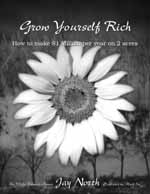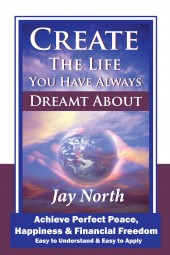First and foremost, grab attention. If you fail to do this in a sales letter, advertisement, flyer, brochure or a press release, it will not be read. As people are overwhelmed with information coming at them in all directions, it is important that timing be split second. It doesn’t have to scream; it can whisper, but it must grab the prospective buyer’s attention. Often, understanding your audience is the biggest challenge, which takes research and consideration. Grabbing attention is done with headlines and lead-ins. In other words, titles, not paragraphs.
Writing and designing sales materials often requires the aid of a professional. Even then, he or she will be only as good as the information you provide about your project, product or service. Oftentimes, with good imagination, you can do the work yourself—and no one knows better than you what you’re promoting. So, before hiring a pro, give it your own best shot.
In writing your sales letter, be sure to consider how to position yourself in your prospective client’s mind—who you are (name, logo, graphics, and vitally important information) against or next to a competitor; i.e., IBM vs. Apple, Chevron vs. Shell, American Airlines vs. Delta, McDonalds vs. Burger King.
I used to employ a staff of up to thirty people to help keep my finger on the pulse of America. I would stay focused on attracting customers and sales for our crops, not on winning glittery awards or making friends. Being able to get widespread or mass product exposure increases a product’s sales or customer base by fifty times or more. I found that increasing the number of special press releases being printed about our farm by 100 percent or more was more important than any award. That’s the only way I was able to stay in business for thirty plus years, create great sales pieces and earn millions of dollars.
Next, the vital elements necessary in getting prospects to continue to want more information are as follows:
1) Reality-talk—directs your information to a specific audience; get to their reality in their minds, not yours.
2) Communicate well—use simple words that are easy to understand.
3) Gain trust and confidence—foster an atmosphere of closeness and camaraderie.
4) Relate how easy it is to buy your produce.
5) State where it can be purchased.
6) Emphasize how little it costs.
7) Explain what’s in it for them. Benefits are extremely important.
8) Hard sell or soft sell. Although, that is an individual choice, remember that people can get turned off easily.
9) Implement artistic design, presentation, quality and control of the offer.
10) Ask for the close, offer more information and always give a means for responding.
11) Offer urgency, ask for a response now and give a reason why they should respond now.
12) Offer discounts where applicable.
13) Offer guarantees when you know you can stand by them.
14) Whenever possible, offer something free. Free helps grab attention, but it really must be free. Don’t ever try to fool or lie your way to a sale.
15) Most importantly, think in terms of attention, desire and activity. Even if clients don’t buy now, give them a reason to contact you.
16) Write in short, fast, to the point paragraphs; not long, drawn-out dissertations.
17) Highlight important points. Bring them up first and last.
18) Use PS’s or Reminders; often they are the most read.
19) Avoid using periods in sales letters. They are an end and tend to stop the reader from reading further.
The Magic Seven
When selling goods or services you must be willing to put on your sales hat. Apply the Magic Seven theory. Contact your potential client or customer seven times—by letter, phone, fax, e-mail or camp on their doorstep. If it’s sales you want, or a contract, or whatever, show genuine interest and determination. After seven attempts and no sale, I would normally dead file the prospect. Although, occasionally, I would make 11 attempts. Always keep track of your contacts, either on a notepad or computer.
When I was in the specialty organic produce business and I found markets that could easily handle half a million dollars a year in purchases, I was relentless, and it paid off in big dividends.
Two important factors to consider are:
1) The emotional state of the receiver.
2) Hitting the right buttons.
People are, at one stage or another, in a fixed emotional state, either high or low. When addressing their requirements, you first should understand and know where they’re at emotionally, so that you can communicate at their level. It’s tricky, since you are seeking to reach quite a wide range of emotions. A too-high or too-low conversational tone guarantees you won’t hit home. To make the challenge somewhat simpler, try communicating in a generally conservative tone. High-energy, fast-paced presentations will scare off most potential customers.
And finally, buttons. Buttons are areas of interest or sensitivity to which a person responds. They are important because, when hit right, the outcome can be worth a million dollars in your sales presentation. Buttons cause a person to act or react. Obvious buttons are money, sex, fear, greed, hostility, consciousness or awareness, strength, security and honesty. Less obvious buttons are subtlety in appearance, approach, speech and demeanor.
Hitting buttons correctly is an art all in itself. When technique and artistry are applied successfully, you may have a sales letter or campaign worth millions.
Twice during my career as a marketer, I’ve had sales letters bring in a whopping 55 percent response. In one instance, the chief executive of marketing for Sears called to congratulate me on my letter and to place a first order to the tune of 25,000 units. While this did happen, it is not the norm. Today, people receive so much mail, E-mail and so many faxes that the challenge of getting a quality message about a high quality product or service to the recipient has become exceedingly difficult. The 21st century certainly is the Information Age. Those with a high standard and ingenuity in their communication will stand a better chance of getting their information out and into the minds of potential customers.
Like what you’ve read? Buy Jay’s book, Grow Yourself Rich, available for download now. $19.95


